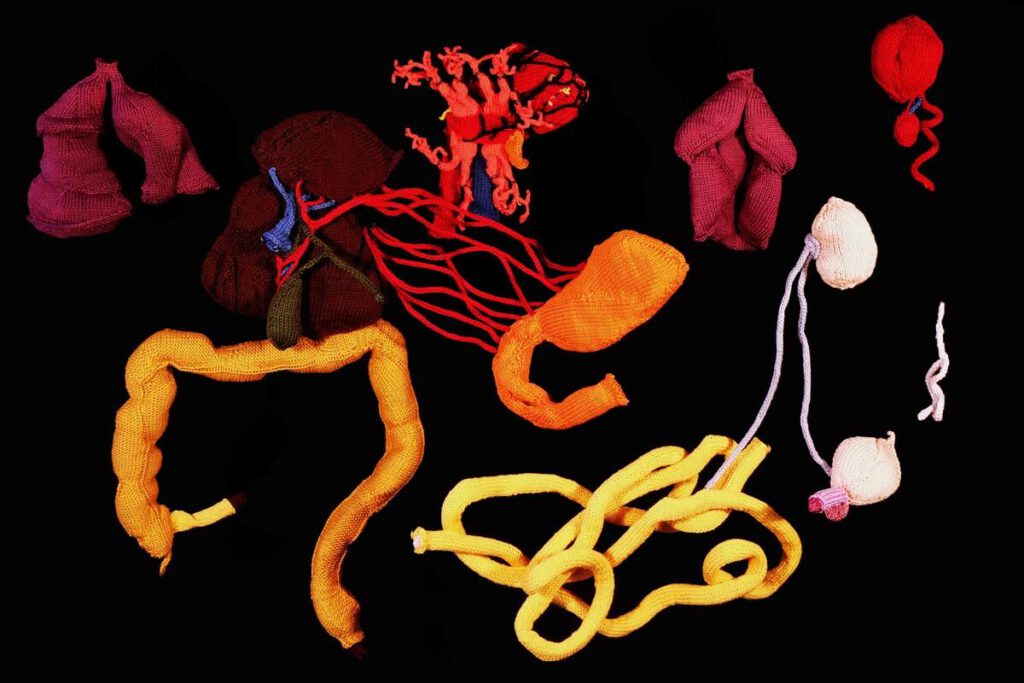Reproduced artwork detailing small and large intestines with Tibetan and Latin labels

Reproduced artwork detailing small and large intestines with Tibetan and Latin labels Reproduced artwork detailing small and large intestines with Tibetan and Latin labels. Contemporary knitwork. © Katharina Sabernig – Tibetan classical medical vocabulary is already rich in anatomical terms. When encountering biomedical concepts, new terms were coined in the Tibetan language. Nevertheless, many historical […]
Knitted artwork of guts based on Tibetan medical painting at Atsagat Monastery, Republic of Buryatia, Russia.

Knitted artwork of guts based on Tibetan medical painting at Atsagat Monastery, Republic of Buryatia, Russia Knitted artwork of guts based on Tibetan medical painting at Atsagat Monastery, Republic of Buryatia, Russia. © Katharina Sabernig – In Buryatia, an ethnically Mongolian region belonging to Russia, Tibetan medical knowledge encountered biomedical knowledge in the early twentieth […]
